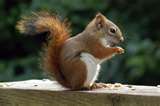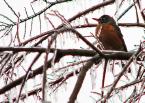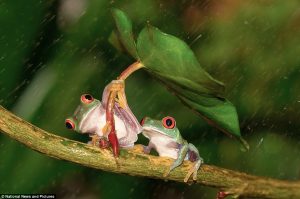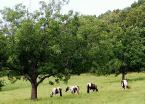Nature this Month: April

- Squirrels prepare nests, using masses of leaves stuffed into forks of tree branches.
- Chipmunks leave their holes, looking for food and mates.
- Male frogs, such as spring peepers, call from damp woods and ponds in search of mates.
- In wet places, pussy willows bloom.
- Spotted salamanders look for mates.
- Earthworms, ants, sowbugs, and other small creatures emerge from deep in the soil or from under leaves and rocks, making good meals for robins and other animals.
- Woodchucks or groundhogs come out of their burrows, looking for food and mates.
- Early in April, wood frogs have left their winter shelters for nearby ponds, where they find mates.
- The cecropia moth pupa will sleep until the weather gets warm enough for it to transform into a butterfly and hatch out of its cocoon.
- Bumblebee queens are ready to build nests and start new colonies in holes in the ground or logs
April can be a rainy month, with snow still falling from time to time in northern regions.
What do animals do in the rain?
Some birds huddle under eaves of buildings or within thickets of trees and shrub.
Other birds brave it out, ruffling up feathers to keep warmth in and rain out.

Spiders go to the edges of their webs, away from wet droplets that gather in the centers of the sagging webs.

Squirrels pull their tails over their heads like umbrellas.

Small animals hide under leaf cover or in holes.

Large animals find protection under trees or turn against the wind and wait out the rain.

- Ducks that have been wintering on more southern seacoasts and lakes fly back to nest in northern ponds.
- Forsythia, daffodils, dandelions, and early woodland wildflowers are in bloom.
- On warm days a few insects can be seen, such as, flies, spiders, honey bees, mourning cloak butterflies and spring azure butterflies.
- The April moon has been called the Grass Moon by some Native American tribes.
